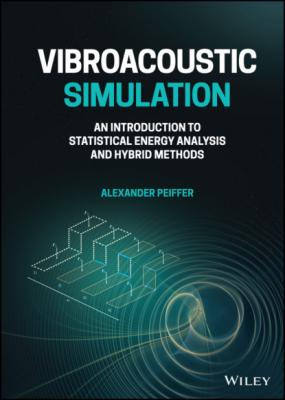Vibroacoustic Simulation. Alexander Peiffer
Чтение книги онлайн.
Читать онлайн книгу Vibroacoustic Simulation - Alexander Peiffer страница 36
 the direction of the unit vector n and with F=pAn we get:
the direction of the unit vector n and with F=pAn we get:
As in Equation (1.48) the time average is given by:
Using the harmonic plane wave solutions for pressure (2.34) and velocity (2.36)
the time averaged mean intensity yields:
and finally:
We see that the specific impedance z0=ρ0c0 relates the intensity to the squared pressure.
The kinetic energy density ekin in a control volume V0 is written as
The potential energy density epot follows from the adiabatic work integral as in equation (2.9)
If we use Equation (2.15) we get the change in density as a start for the change in volume
With unit mass M in the control volume V0 it follows from ρ=M/V0 that
Finally we get:
Pressure and velocity are in phase for plane waves; the same is true for the potential and kinetic energy density, so the total energy density is given by:
Using Equation (2.34) the time average over one period leads to:
Finally, we can see that the speed of sound relates energy density to the sound intensity.
All those above expressions are useful for the description and evaluation of sound fields. Especially in case of statistical methods that are based on the energy density of acoustic subsystems they link the wave fields to the energy in the systems and the power irradiating at the system boundaries.
If the intensity can be determined over a certain surface the source power is calculated by integrating the intensity component perpendicular to the surface
2.3.4 Damping in Waves
There is no motion without damping, and a sound wave propagating over a long distance will vanish. This is considered by adding a damping component to the one-dimensional solution of the wave equation similar to the decay rate in (1.22)
Here